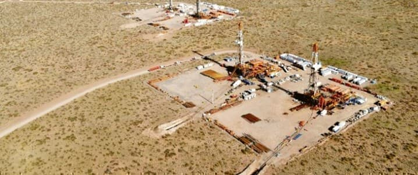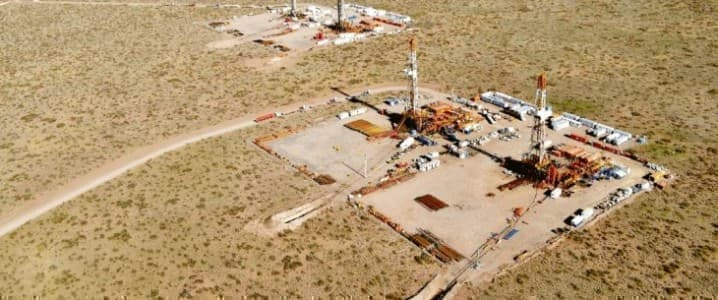Will Argentina Reach Its 1 Million Bpd Oil Production Goal?

Will Argentina Reach Its 1 Million Bpd Oil Production Goal?
· Crude production at Argentina’s Vaca Muerta shale has hit a series of record highs over the last year.
· Vaca Muerta has some of the lowest breakeven costs for onshore South America.
· Rystad: Vaca Muerta could be pumping as much as 1 million barrels of crude oil daily by 2030.

Tiny South American nation of less than one million, Guyana has emerged as the latest drilling hotspot in South America, after decades where the regional oil industry was dominated by Venezuela and Brazil. While those countries are attracting considerable industry attention for a variety of reasons, it is the giant Vaca Muerta shale in Argentina which is shaping up as the continent’s hottest onshore oil boom. The 8.6-million-acre geological formation is estimated to contain 16 billion barrels of shale oil and 308 trillion cubic feet of shale gas, which are the second largest shale gas reserves globally. The Vaca Muerta has been compared to the prolific South Texas Eagle Ford shale. The government in Buenos Aires views the development of the Vaca Muerta’s hydrocarbon wealth as a silver bullet for Argentina’s economic malaise.
The development of the Vaca Muerta continues to drive Argentina’s oil production which has hit a series of record highs over the last year. According to government data Argentina pumped an average of 626,236 barrels of crude oil per day which was a notable 9% higher than for the same month a year earlier. It was marginally lower than Argentina’s all-time record high of 631,103 barrels per day, recorded for March 2023. Growing shale oil production from the Vaca Muerta is responsible for this solid production growth. For May 2023, shale oil output was 302,117 barrels per day, which was an impressive 25% higher year over year and amounted to 48% of Argentina’s total petroleum production compared to 42% for the same period a year earlier.
Economically crucial natural gas output is also soaring because of the development of the Vaca Muerta. For May 2023, Argentina pumped 4.8 billion cubic feet of natural gas, which while 4.6% greater than a month earlier was still lower than the all-time high of just under 5 billion cubic feet per day extracted during August 2023. It is rapidly growing shale gas production which is responsible for this solid expansion. For May 2023, shale gas output was 2.7 billion cubic feet per day representing an increase of 10% month over month and 3% year over year. As a result, shale gas for the month comprised 58% of total natural gas production compared to 55% a year earlier.
Production growth will continue at a solid clip with energy companies including national oil company YPF and foreign supermajors investing heavily in Argentina, particularly the Vaca Muerta. State-controlled energy company YPF plans to spend $5 billion on developing its operations during 2023, representing a significant 20% increase over 2022. YPF has allocated $3.6 billion of that budget to upstream operations with $2.3 billion earmarked for shale, 68% of which will go toward drilling activities and the remaining 32% to be spent on urgently needed infrastructure as well as other facilities.
Argentina’s economic ministry in an early June 2023 statement said that U.S. energy supermajor Chevron, which has considerable experience developing unconventional oil assets, will invest more than $500 million in the Vaca Muerta. Chevron plans to spend that money developing the El Trapial Block in the west of the geological formation. The block, according to ministry data, contains proven reserves comprised of 12 million barrels of oil and 7.2 billion cubic feet of natural gas. There are also contingent resources of 194 million barrels of oil and 355 billion cubic feet or natural gas. Shell is another supermajor investing in the Vaca Muerta. According to a February 2023 statement from the government Shell has invested $2 billion in developing unconventional hydrocarbon resources in the formation.
Industry consultancy Rystad Energy issued a statement claiming that the Vaca Muerta could be pumping as much as 1 million barrels of crude oil daily by 2030, although that is contingent on infrastructure shortages being resolved. If production reaches 1 million barrels per day, then Argentina will emerge as one of Latin America’s largest oil producers, seeing the crisis riven overtake Colombia with the region’s third largest hydrocarbon output. To address the constraints, including a lack of takeaway capacity, emerging in the Vaca Muerta due to a lack of infrastructure YPF has committed to a plan where it along with partners will spend up to $7 billion on various facilities including pipelines. CEO Pablo Iuliano in an April 2023 stated that YPF will provide 40% of that funding.
The Vaca Muerta will keep attracting considerable energy investment. The formation has some of the lowest breakeven costs for onshore South America, and they are progressively falling as more discoveries are made, oilfields are developed, and infrastructure is built out. A variety of numbers have been thrown around over the last three years with some analysts claiming that the Vaca Muerta has a breakeven price as high as $55 per barrel, whereas others claim it is far lower having fallen substantially since the pandemic.
According to industry consultancy McKinsey & Company the formation's technical breakeven is $36 per barrel and $1.54 per million cubic feet of natural gas. Those prices are comparable with U.S. shale formations and among the lowest for onshore operations in South America. The Vaca Muerta’s attraction is bolstered by high-quality reservoirs with superior well productivity compared to other shale deposits. McKinsey believes the formation's geology is comparable to the Permian Basin and superior to other U.S. shale formations in terms of reservoir pressure, thickness and organic content.
The oil produced from the Vaca Muerta has an average API gravity of 40 degrees and sulfur content of less than 0.5%, making it sweet and light. Those characteristics make the petroleum easier as well as cheaper to refine into high-quality gasoline without using complex refining techniques. There is a growing demand for lighter sweeter oil grades globally to meet ever stricter emissions standards for fuels. The carbon intensity associated with lifting oil in the Vaca Muerta is one of the lowest globally. This is becoming an increasingly important operational attribute in a world where there is an aggressive push to decarbonize the global economy and for big oil to make operations carbon neutral.
For these reasons, investment in the Vaca Muerta will continue growing despite the economic turmoil engulfing Argentina. That will not only give the country’s economy, export and balance of trade a healthy boost but bolster global supplies of light sweeter crude oil. Based on the ramping-up of activity in the Vaca Muerta and YPF’s aggressive spending to develop oilfields and crucial infrastructure, Argentina will likely reach the 1 million barrels per day of production predicted by Rystad.




